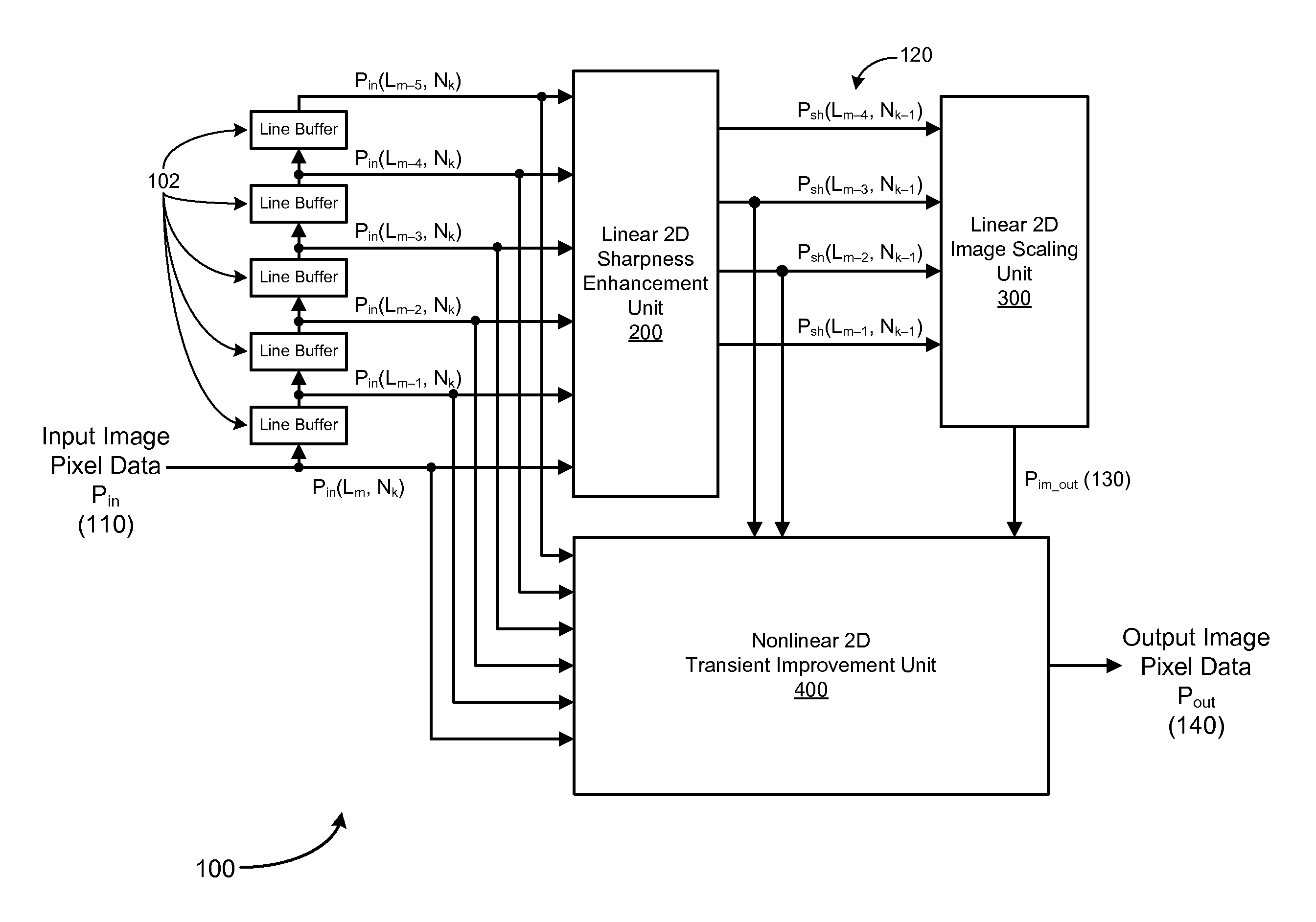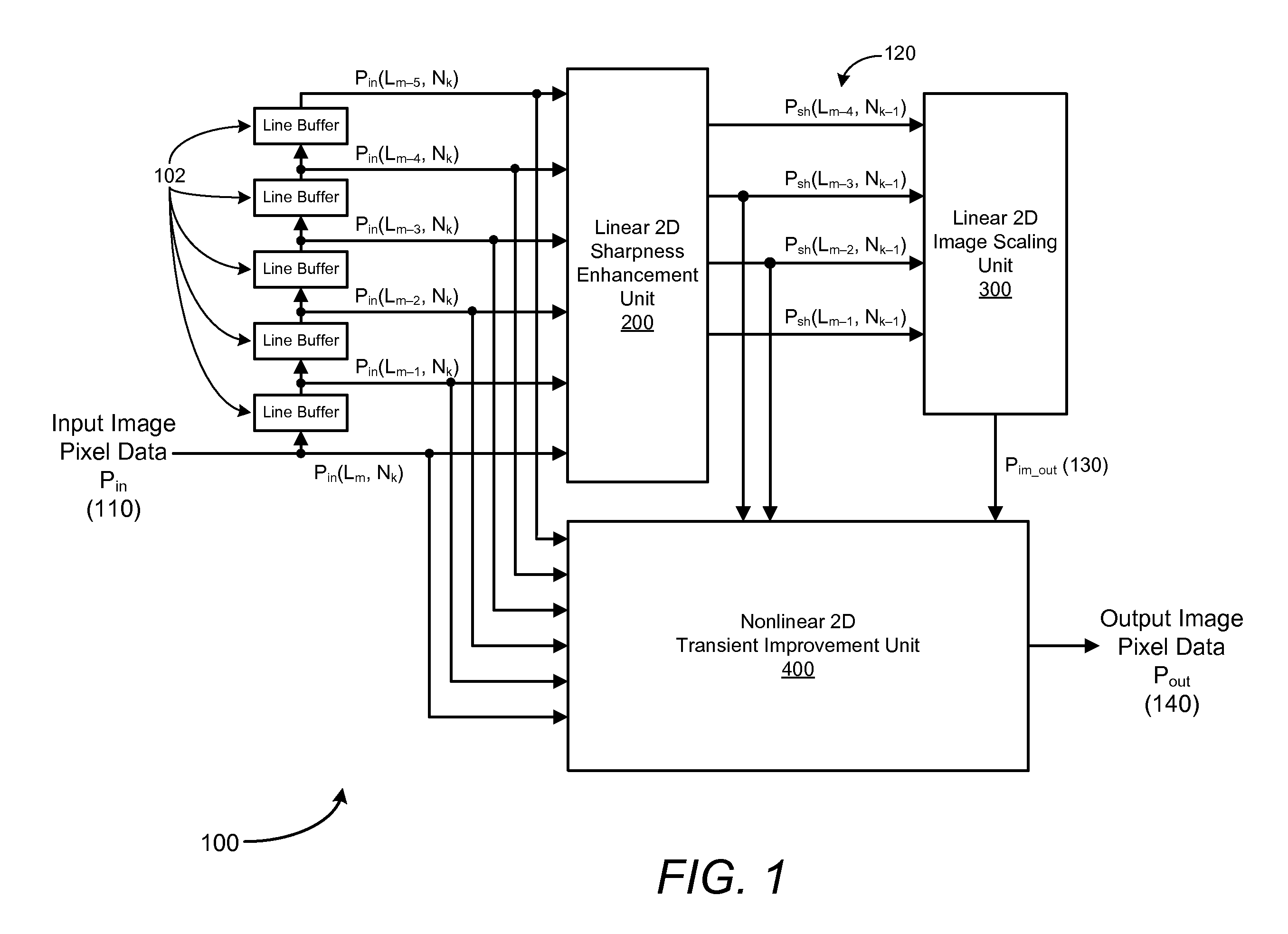Method and system for digital image scaling with sharpness enhancement and transient improvement
a digital image and transient improvement technology, applied in the field of video signal processing, can solve the problems of objectionable visual artifacts in the output image, blurred details and edges of the output image, linear interpolation systems can produce visual artifacts, etc., to improve the transient response at edges, enhance high frequency components of input pixel data, and reduce the cost, complexity and power consumption of the system
- Summary
- Abstract
- Description
- Claims
- Application Information
AI Technical Summary
Benefits of technology
Problems solved by technology
Method used
Image
Examples
Embodiment Construction
[0033]The present invention relates in general to video signal processing and in particular to a method and system for enhancing sharpness and improving transients while magnifying or reducing a digital image from a video signal. The following description is presented to enable one of ordinary skill in the art to make and use the invention and is provided in the context of a patent application and its requirements. Various modifications to the preferred embodiments and the generic principles and features described herein will be readily apparent to those skilled in the art. Thus, the present invention is not intended to be limited to the embodiments shown, but is to be accorded the widest scope consistent with the principles and features described herein.
[0034]According to one embodiment of the present invention, an image scaling system includes a linear two-dimensional (2D) sharpness enhancement unit, a linear 2D image scaling unit, and a transient improvement unit. Each unit share...
PUM
 Login to View More
Login to View More Abstract
Description
Claims
Application Information
 Login to View More
Login to View More - R&D
- Intellectual Property
- Life Sciences
- Materials
- Tech Scout
- Unparalleled Data Quality
- Higher Quality Content
- 60% Fewer Hallucinations
Browse by: Latest US Patents, China's latest patents, Technical Efficacy Thesaurus, Application Domain, Technology Topic, Popular Technical Reports.
© 2025 PatSnap. All rights reserved.Legal|Privacy policy|Modern Slavery Act Transparency Statement|Sitemap|About US| Contact US: help@patsnap.com



